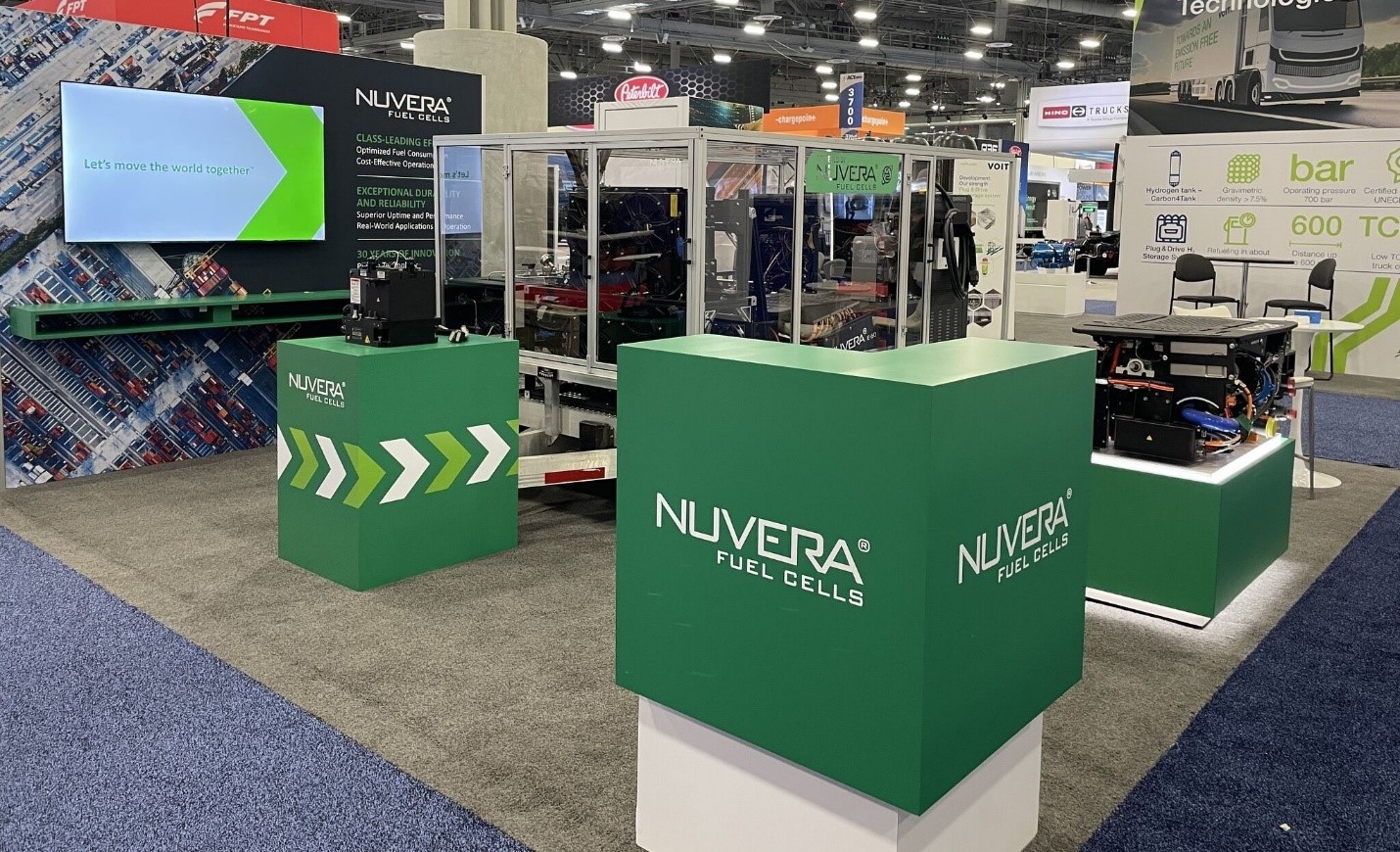Mike Basile, Sales & Business Development Leader, Nuvera Fuel Cells Americas
The Advanced Clean Transportation Conference and Expo (ACT Expo), one of the marquee events for the zero-emission mobility industry, was held this past May in Las Vegas, Nevada. The Expo brings together OEMs, fleet operators, suppliers, advisory groups, educators, public entities, and more to share and learn about new technology transforming the mobility space. As both exhibitor and presenter, Nuvera presented our latest products and advancements in hydrogen fuel cell technology.
According to the Environmental Protection Agency, the transportation sector accounts for 28 percent of total US greenhouse gas emissions, making it the largest source of carbon pollution in the US. To achieve the decarbonization targets required to reach net-zero emissions by 2050, it is crucial to continue driving down CO2 emissions through industry-wide action and government initiatives.
ACT Expo showcased a broader array of efforts across various sectors to electrify all vehicle types than ever before, from school buses and construction vehicles to light, medium, and heavy-duty trucks, along with material handling equipment, marine vessels, and other on- and off-road platforms. Many of these vehicles operate emissions-free, powered by batteries or fuel cells or both. The expo also featured many examples of alternative power systems such as EV charging stations, hydrogen refueling systems, battery-powered energy storage systems, and gensets.
Nuvera Fuel Cells exhibited its newest technology solutions at the event, including the launch of HydroCharge™, a hydrogen-powered mobile genset and EV charger. Witnessing the progress made in just one year since the last show was inspiring, and Nuvera is proud to be among the many companies showcasing significant advancement in zero-emission transportation offerings over the past year.

This was the first year that ACT Expo was held in Las Vegas, driven by its continued growth and increasing commercial interest. Attendance figures reflect substantial sector expansion. The number of show participants grew by 50%, exhibitors by 89%, and the number focusing on hydrogen operations nearly doubled, highlighting the growth of hydrogen solutions in the clean transportation industry.
While there has been significant progress towards increased adoption of zero-emission technologies, there remain challenges and obstacles to overcome – perhaps none more than infrastructure build-out to power both EVs and fuel cell vehicles. As supporting infrastructure becomes more extensive, adoption rates will rise, encouraging further adoption of zero-emissions vehicles (ZEVs). However, developers are hesitant to invest in further infrastructure expansion until there is sufficient hydrogen or electricity off-take. This conundrum continues to impede greater adoption by public entities and corporations alike.
The good news is that public funding and incentives continue in this area to help drive demand. Increased funding from state and federal programs, as discussed in breakout sessions, presentations, and informal conversations, is crucial for advancing these efforts. A major advance was made in 2023 with the announcement of seven regional hydrogen hubs (H2Hubs) funded by $8 billion from the Bipartisan Infrastructure Law, and leveraging even greater private investment. This initiative is expected to have a major impact in decarbonizing heavy-duty transportation as well as steel and cement production and other heavy industry sectors.
Federal funding has been integral to Nuvera from its inception. Following Nuvera’s recent $30 million award from the Department of Energy under the Bipartisan Infrastructure Law and $14 million in investment tax credits from the U.S. Internal Revenue Service under the Inflation Reduction Act, this support continues to accelerate Nuvera’s fuel cell development and manufacturing expansion.
Another barrier to greater adoption of hydrogen fuel cell and battery electric vehicles is the cost disparity compared to their conventional diesel/ICE counterparts. Achieving scale in production, driven by demand, is crucial to leveling the playing field. One proposed solution, as suggested by a keynote speaker, is implementing a carbon tax. This measure would assign a cost to the use of CO₂-emitting technologies, potentially accelerating the adoption of zero-emission alternatives.
Grid infrastructure and resiliency was also a recurring topic at the Expo. The amount of electricity required to support broad-based integration of BEVs into large fleets is massive and concerning. The lead time to ensure adequate power supply for a fleet of battery electric delivery trucks, terminal tractors, or other medium- and heavy-duty vehicles can be very long, often many years. This is an area where alternatives are being sought, with an increasing number of developers focusing on backup and distributed power systems, such as microgrids, as evidenced by multiple exhibitors and presenters.
Hydrogen can play a significant role in decarbonizing the power sector. Hydrogen used to operate stationary or mobile fuel cell systems can be produced on-site using solar or wind-powered electrolyzers, supplementing electricity delivered through the grid. As corporate electricity customers aim to cut their carbon footprint and reduce grid dependency, interest in hydrogen fuel cell backup and primary systems is growing. Nuvera has developed a 360-480 kW fuel cell power system that has been operating near Milan, Italy since 2021. We collaborate with third-party OEMs and integrators on systems ranging from 100 kW to multiple megawatts. With increasing electricity demand and a focus on reliable, carbon-free sources, we expect hydrogen fuel cell power generation to rise significantly, especially to meet the huge demand for electricity to power datacenters, driven by the emergence of AI.
ACT Expo 2024 showcased major advancements and innovations in the mobility sector from around the world. The event highlights limitless possibilities for reducing the carbon impact of transportation. While many challenges and barriers remain for widespread ZEV adoption, scale in manufacturing will lead to high-performing, cost-competitive alternatives to conventional technology. Given the substantial progress on display, there is more confidence than ever that viable solutions are at hand.

